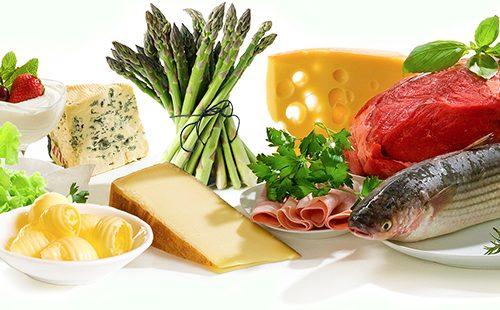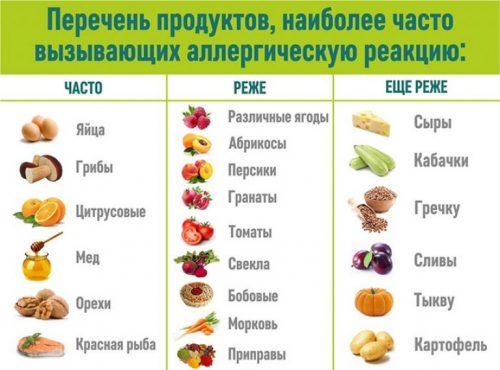The content of the article
The condition when the body acutely (in other words, "inadequately") reacts to any of the external factors is called an allergy. Allergens can be everything that surrounds people at home, at work, in nature. These are dust, chemicals, animals, flowers and, of course, food. Even cases of inadequate response to sunlight, electricity and wi-fi are recorded.
Is mom's menu to blame
Allergies to food ingredients are the most common and dangerous. And most often, an acute reaction to food is observed in children, and the main allergen is considered to be the protein found in cow's milk.
It is no coincidence that a woman’s traditional diet during pregnancy and lactation consists of many “impossible” ones. Moms are forbidden to eat oranges, strawberries, chocolate and other allergen products. Why? This is done to prevent the development of food allergies in children. However, not all pediatricians now approve of this approach.

Why does a child have a negative reaction to food
In addition to my mother’s diet, there are many other possible reasons for the child to develop an allergic reaction to food. The predisposition can be passed on to the heir “by inheritance”. Doctors say that if one of the parents is allergic, then the risk of developing the disease in the baby is about 30%. In the case when both father and mother have similar features of the immune system, the probability increases up to 70%.
What other factors can cause problems with the perception of certain foods?
- Diseases during pregnancy. For example, the so-called "late toxicosis." Gestosis is fraught with intrauterine oxygen starvation of the fetus. Also, the cause of the baby’s food allergy can be an infection that my mother treated with antibiotics.
- Not enough enzymes. In newborns, the work of the gastrointestinal tract has not yet been debugged. In particular, the body is not able to produce enough enzymes that are needed to digest protein, carbohydrates and fats.
- Immature microflora and intestines. Because of this, food molecules remain undigested and enter the bloodstream. The body perceives this as a danger and produces antibodies. Therefore, at the next contact with a similar particle, an automatic protective reaction will occur, which will manifest itself externally with allergies.
- Ecology and lifestyle. The risk is also increased due to adverse environmental conditions in which the family lives. That is why allergy cases are more often recorded in urban residents, and not in rural areas. The crumbs explain the malfunctions in the immunity by the fact that the mother smoked during pregnancy.
- Invalid diet. In some cases, experts still associate the food allergy of the crumbs with the incorrect diet of the mother during lactation. For example, a woman is too fond of dairy products, nuts or red fish. Such food can appear on the table of a nursing woman no earlier than three to four months after giving birth. And then - gradually, dosed and after consultation with a curator.

How does a food allergy manifest in a child
This is not just an unpleasant feature of the body. This is a life-threatening disease. And it is important to notice its appearance in time, especially in a child. The reaction is not only on the skin. The gastrointestinal tract also suffers. Here are the most common signs that may indicate an immune response to a food allergen:
- dermatitis;
- Quincke's edema (lips, cheeks, neck increases in size, breathing is difficult);
- nausea and vomiting;
- spitting up;
- constipation or loose stools;
- rhinitis;
- asthma.
Hazardous foods and alternative nutrition
Basically, the children's body reacts to proteins. One of the most common allergens is cow's milk protein. Protein sensitivity in this product is detected in 85% of allergic infants.
The second most common allergen is chicken eggs. Also often there is an allergy to peanuts, nuts, fish, soy and cereals, honey. The table below lists food products that are dangerous in terms of developing food allergies.
The menu of a child who is diagnosed with a food allergy should be agreed with the attending physician. Usually, children of the first year of life are prescribed special mixtures based on partially split cow protein or casein, dairy-free cereals and fruit purees (hypoallergenic). And mothers who are still being fed are advised to audit the diet and cross out all, even the slightest, potentially dangerous dishes.
Treatment and rational choice of drugs
Diagnosis is preceded by the treatment of allergies. The most important thing is to determine the allergen and exclude contact with it. To do this, you probably have to pass skin tests, undergo immunological tests for antibodies and keep a detailed diary of food crumbs.
How to get tested for food allergies? What is important for every mother to know about allergic diseases? You can get answers to these questions by watching a detailed video review on the topic prepared by Informed. It contains current recommendations from the best industry experts.
Of course, food allergies cannot be left untreated. After all, the disease can progress and even lead to the death of the child. Patients must be prescribed antihistamines, enterosorbents and other drugs.
Unfortunately, such a set of medicines can cost a pretty penny. For example, one package of modern antihistamines can cost from 400 to 1000 rubles. But you can save a lot if you pick up medicines on the Informed online help.This medical resource allows you to conveniently find the most favorable price offers that pharmacies give.


